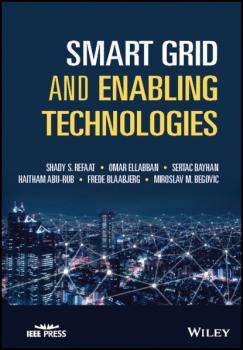ТОП просматриваемых книг сайта:
Физика
Различные книги в жанре Физика, доступные для чтения и скачиванияАннотация
Solar cells are semiconductor devices that convert light photons into electricity in photovoltaic energy conversion and can help to overcome the global energy crisis. Solar cells have many applications including remote area power systems, earth-orbiting satellites, wristwatches, water pumping, photodetectors and remote radiotelephones. Solar cell technology is economically feasible for commercial-scale power generation. While commercial solar cells exhibit good performance and stability, still researchers are looking at many ways to improve the performance and cost of solar cells via modulating the fundamental properties of semiconductors. Solar cell technology is the key to a clean energy future. Solar cells directly harvest energy from the sun’s light radiation into electricity are in an ever-growing demand for future global energy production. Solar cell-based energy harvesting has attracted worldwide attention for their notable features, such as cheap renewable technology, scalable, lightweight, flexibility, versatility, no greenhouse gas emission, environment, and economy friendly and operational costs are quite low compared to other forms of power generation. Thus, solar cell technology is at the forefront of renewable energy technologies which are used in telecommunications, power plants, small devices to satellites. Aiming at large-scale implementation can be manipulated by various types used in solar cell design and exploration of new materials towards improving performance and reducing cost. Therefore, in-depth knowledge about solar cell design is fundamental for those who wish to apply this knowledge and understanding in industries and academics. This book provides a comprehensive overview on solar cells and explores the history to evolution and present scenarios of solar cell design, classification, properties, various semiconductor materials, thin films, wafer-scale, transparent solar cells, and so on. It also includes solar cells’ characterization analytical tools, theoretical modeling, practices to enhance conversion efficiencies, applications and patents.
Аннотация
Discover foundational topics in smart grid technology as well as an exploration of the current and future state of the industry As the relationship between fossil fuel use and climate change becomes ever clearer, the search is on for reliable, renewable and less harmful sources of energy. Sometimes called the electronet or the energy Internet, smart grids promise to integrate renewable energy, information, and communication technologies with the existing electrical grid and deliver electricity more efficiently and reliably. Smart Grid and Enabling Technologies delivers a complete vision of smart grid technology and applications, including foundational and fundamental technologies, the technology that enables smart grids, the current state of the industry, and future trends in smart energy. The book offers readers thorough discussions of modern smart grid technology, including advanced metering infrastructure, net zero energy buildings, and communication, data management, and networks in smart grids. The accomplished authors also discuss critical challenges and barriers facing the smart grid industry as well as trends likely to be of import in its future development. Readers will also benefit from the inclusion of: A thorough introduction to smart grid architecture, including traditional grids, the fundamentals of electric power, definitions and classifications of smart grids, and the components of smart grid technology An exploration of the opportunities and challenges posed by renewable energy integration Practical discussions of power electronics in the smart grid, including power electronics converters for distributed generation, flexible alternating current transmission systems, and high voltage direct current transmission systems An analysis of distributed generation Perfect for scientists, researchers, engineers, graduate students, and senior undergraduate students studying and working with electrical power systems and communication systems. Smart Grid and Enabling Technologies will also earn a place in the libraries of economists, government planners and regulators, policy makers, and energy stakeholders working in the smart grid field.
Аннотация
Рассмотрены примеры типовых задач по дисциплине «Теоретическая механика», изложены методические указания по их решению. Предназначен для студентов высших учебных заведений, обучающихся по укрупненной группе 23.00.00 «Техника и технологии наземного транспорта», специальности 23.05.01 «Наземные транспортно-технологические средства», специализациям 23.05.01.01 «Автомобили и тракторы», 23.05.01.02 «Подъемно-транспортные, строительные, дорожные средства и оборудование».
Аннотация
Книга содержит описание принципов работы электролампового прибора политрон, который в 60—90-х гг. демонстрировал уникальные феномены взаимодействия человека и машины в широком спектре задач. Оптическая система «Метатрон», состоящая из кристаллов, лазеров и зеркал, является развитием класса устройств, демонстрирующих эффекты влияния сознания человека на технику и влияния приборов на техногенные и природные процессы, она используется для прогнозирования и нормирования аномальных стихийных явлений.










